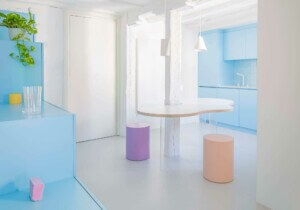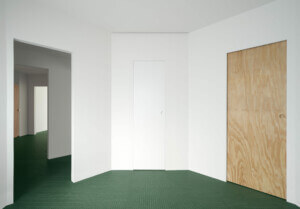A new single-family home in Madrid challenges traditional definitions of the “single family” and uses design to support the realities of aging. Called Beyond the Family Kin, the home is a collaboration between New York-based architect Ignacio G. Galán and Madrid-based duo Alvaro Martin Fidalgo and Arantza Ozaeta of OF Architects.
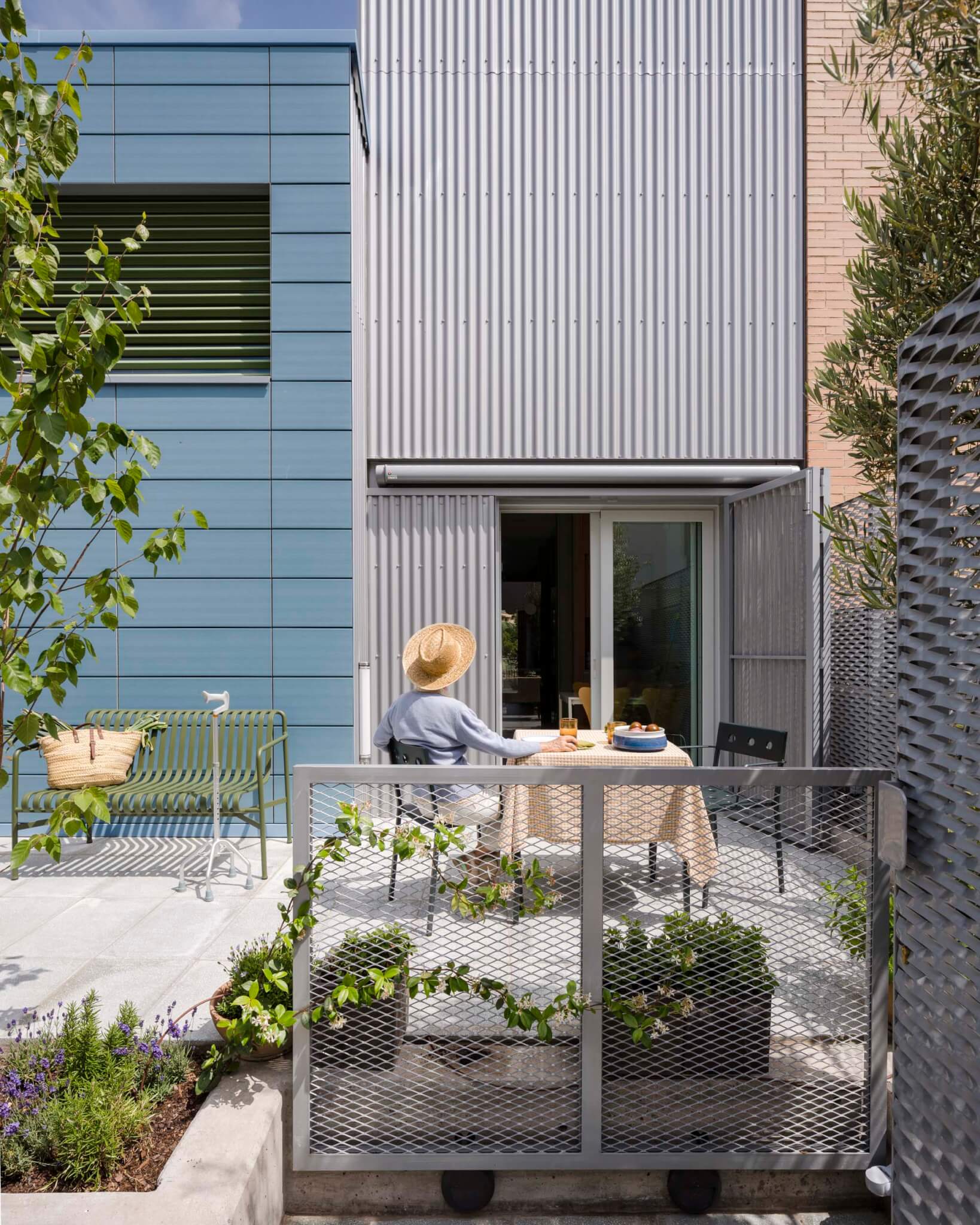
Consistent with its unexpected architectural personality, this three-story urban home seems an unlikely choice when designing for aging in place. A quick Google search for “houses for aging in place” yields images of sprawling, single-story suburban ranches. On the contrary, this home has a tight footprint, vertically stacked with three levels. There are obvious design prerequisites that must be met for such a brief: zero thresholds, easy-access hardware, adequate spatial clearances for those using a walker, and so on. But Galán told AN, “We’ve been thinking of aging as a social, cultural, political, economic, technical reality—concerns like how to fight isolation [have] become more relevant.”
Galán, Fidalgo, and Ozaeta’s clients were an older couple with strong ties to the neighborhood. They wanted to stay, but needed a space designed for their changing needs that could simultaneously feel open and inviting to their community. In contrast to the single-family home, which Galán viewed as “traditionally linked to a very stable idea of a family,” he and the design team began to ask, how can networks of care which extend beyond the family redefine kinship? What architecture do they then need?
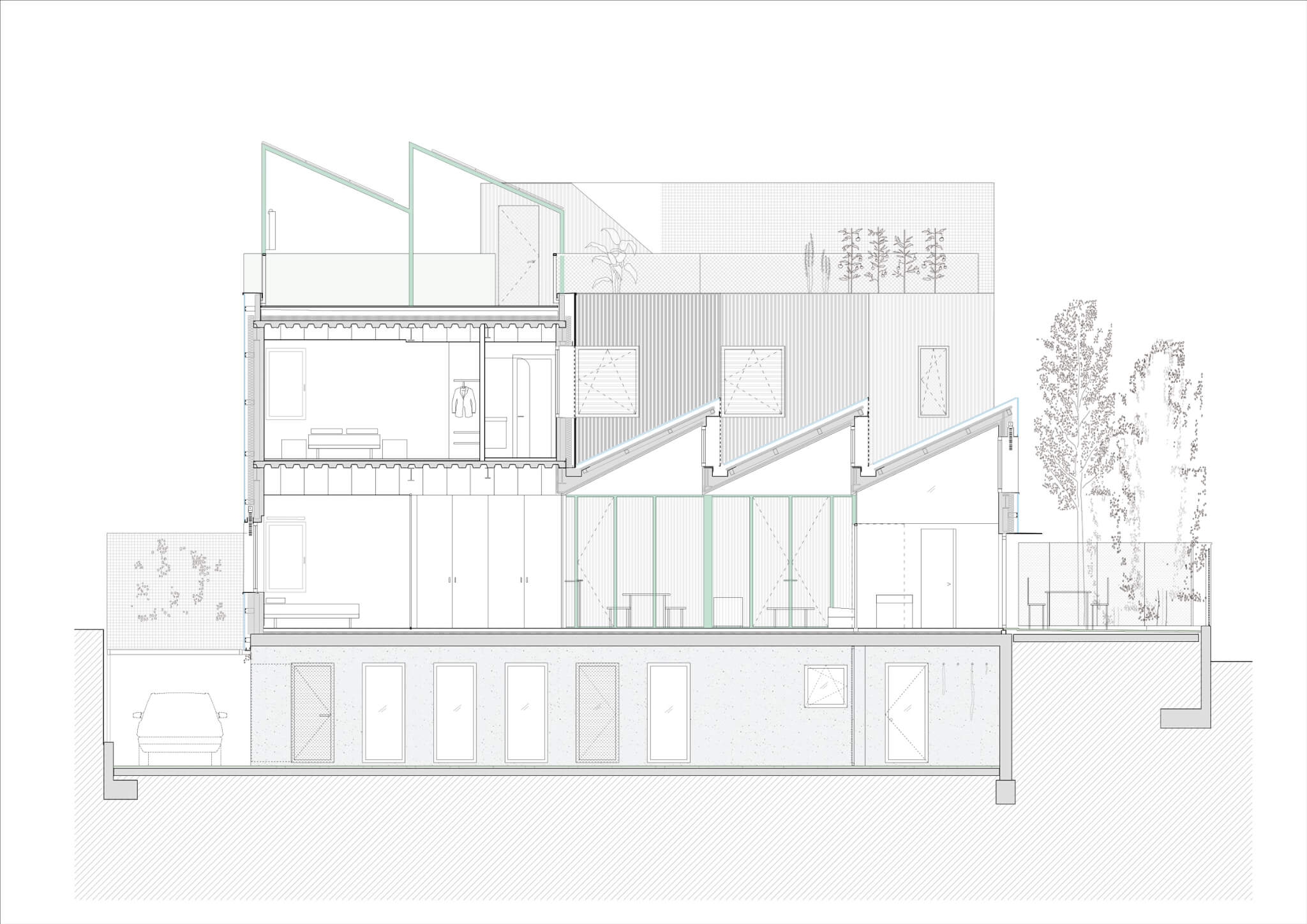
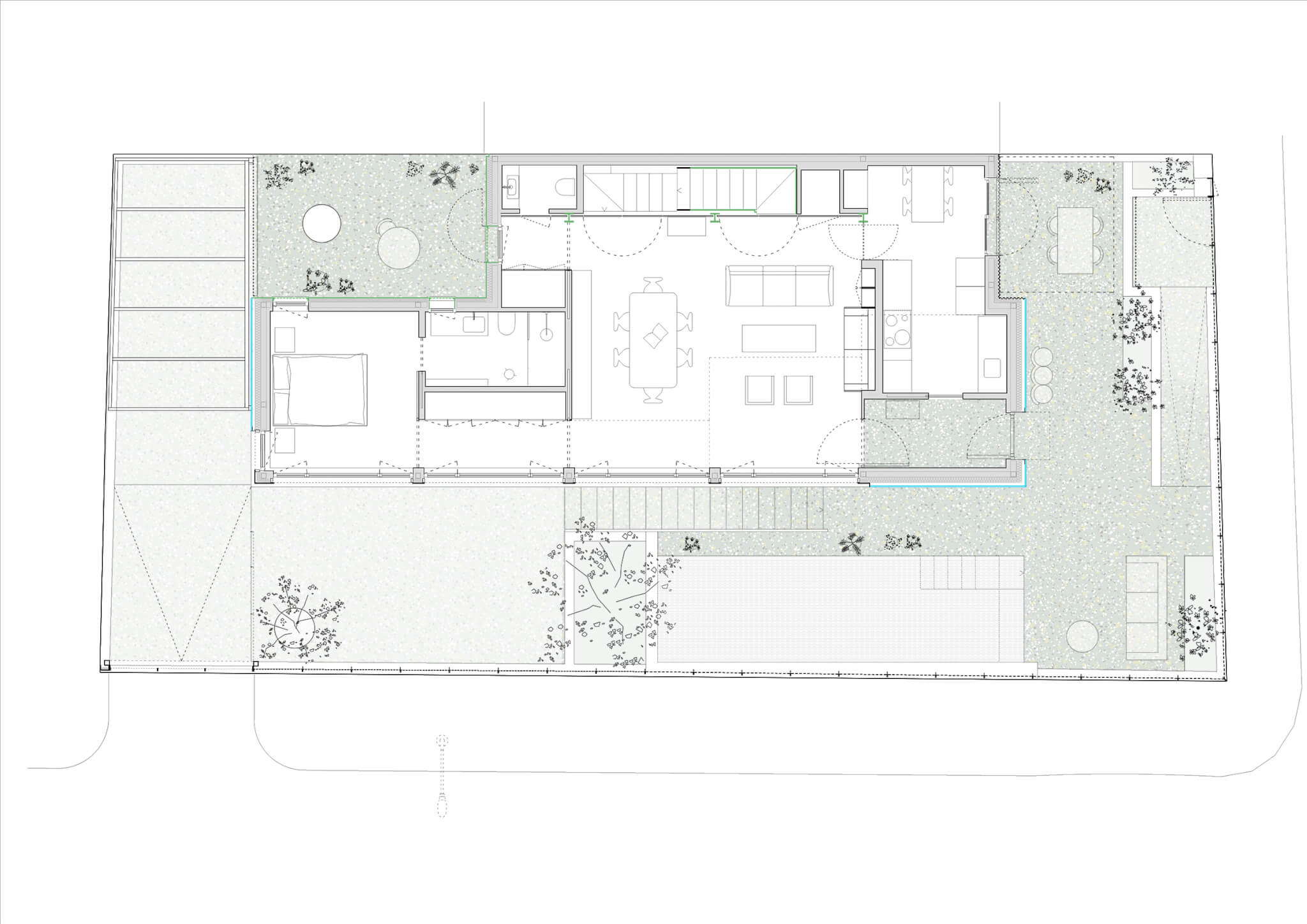
“The problem is the structural way in which aging people are isolated or disempowered—which is not a problem of aging but is a problem of the structures around aging,” Galán continued. For the designers, architecture is a valuable tool for addressing these issues.
The resulting house for the couple spans three distinct levels that cascade down a sloping corner lot. It’s full of accessible, flexible arrangements. The second floor serves as the main living space for the couple, opening onto a front patio and pool deck. But other living areas integrated into this project begin to challenge the label of “single family.” There is an ADU below the client’s main living space accessible via a sunken garden patio. This unit has been intentionally designed to seamlessly welcome a future caretaker, or facilitate financial support as a rental ideally positioned for students at the nearby university. A third living space fills a more traditional role as a guest suite, available for visiting friends or family members. Defined by a striking serrated roofline, this uppermost floor is also topped with a rooftop garden and photovoltaic canopy playfully painted a minty green.
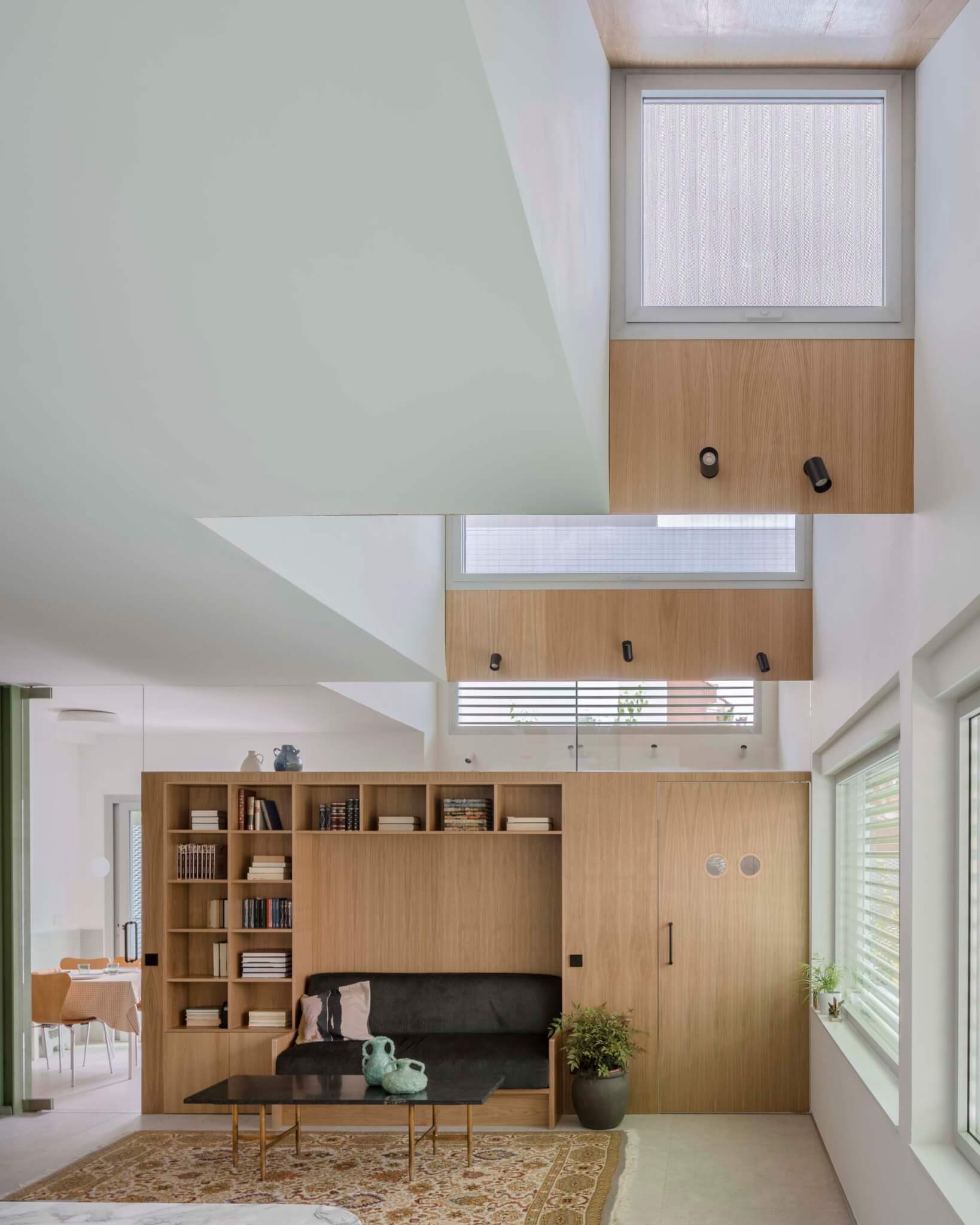
The top level plan features a series of setbacks, hugging a series of sawtooth clerestory windows which provide the primary floor with ample light and volume despite sitting at-grade. This deference to the rebated roof figure creates additional corners, benefitting the guest suites: every room receives windows on perpendicular walls, bringing in light from multiple directions. This clever architectural carving is a notable achievement for urban housing.
This negotiation of complexity that arises from carving each individual level results in a hybrid figure—not quite mass, not totally planar, but stitched together. The exterior is distinguished by blue ceramic tile and corrugated metal cladding. At the proverbial seam, the ceramic and metal materials meet at relatively thin corners, yet the blue drip edge flashing of the sawtooth continues, sweeping over the ridge cap of the corrugated metal cladding. These quirky details create an aspect of the delightfully unexpected. The narrow, south-facing facade presents as two boxes from one side of the lot, but turning the corner westward challenges this understanding: where one would expect a border between the two boxes, the corrugated metal “breaches” this gap, creating a continuous surface.
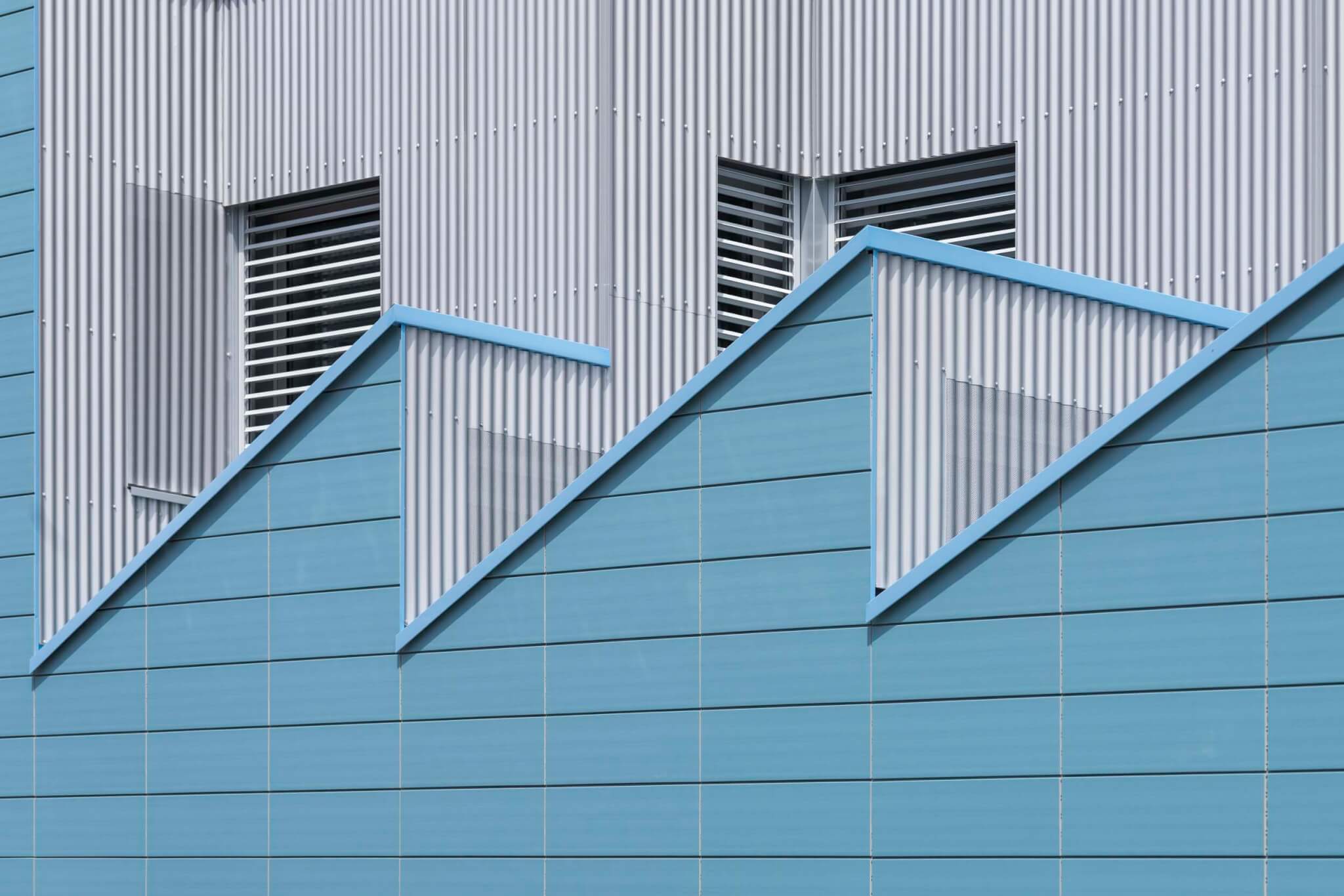
“Architecture is decisive,” Galán admitted. “Spatial and technical decisions articulate social networks. [We’re] interested in the way architecture becomes a platform that is entangled within movements and structures that are larger than it but whose technical definition becomes essential to their articulation.”
Perhaps the spirit of the Beyond the Family Kin project is best summed up not in a plan or photograph of the completed home, but in a small vignette rendering of the large dining table at its center. Long enough to seat six or eight people, it is much too large for the couple to dine at alone. But it’s emblematic of the intentionality behind each design decision, coming together to create an open table.
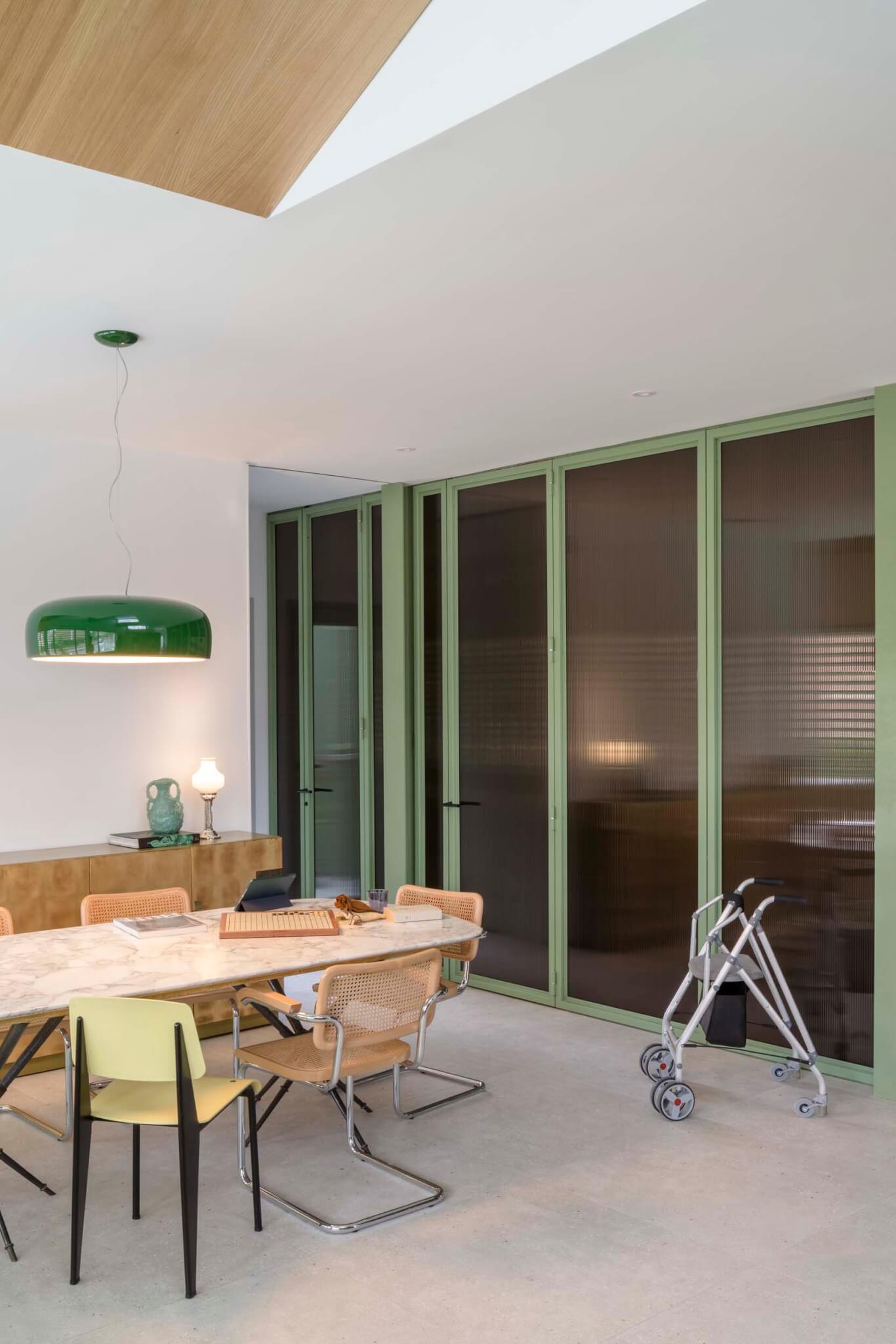
Davis Richardson is an architect at REX and has taught at NJIT and the Architectural Association.









